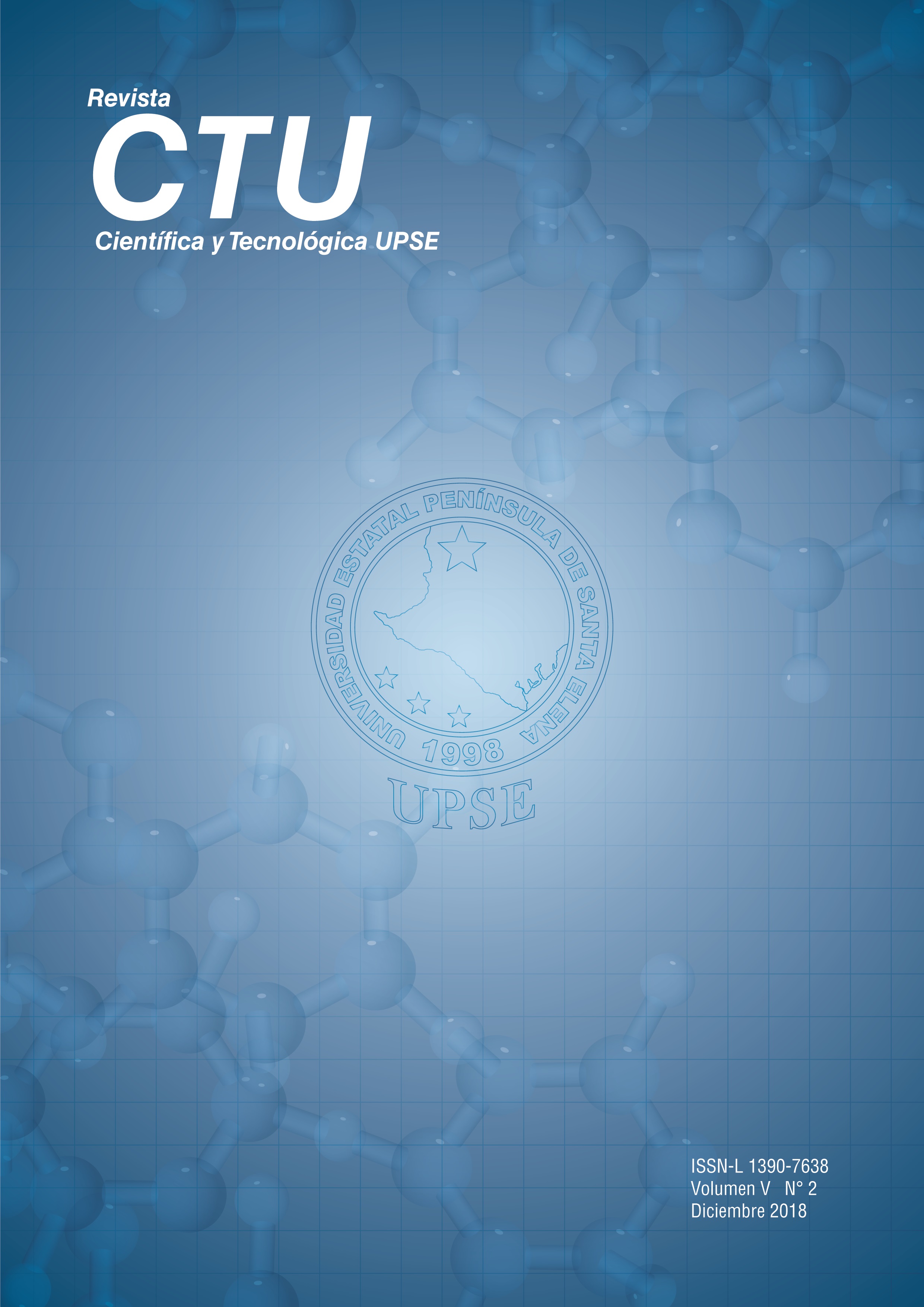Composición, abundancia y distribución de Diatomeas en dos localidades de la provincia del Guayas entre octubre 2013 y febrero 2014.
DOI:
https://doi.org/10.26423/rctu.v5i2.353Palabras clave:
Distribución, composición, dbundancia, diatomeas centralesResumen
El presente trabajo se desarrolló en dos localidades de la Provincia del Guayas entre octubre y febrero 2014. El objetivo de esta investigación fue comparar la composición, abundancia y distribución de diatomeas centrales en las aguas estuarinas de la parroquia Posorja y en el Cantón General Villamil Playas de influencia oceánica. Los arrastres superficiales se realizaron quincenalmente a bordo de una embarcación un motor de 75 HP a una velocidad de 2 nudos, en un tiempo de 5 minutos de recorrido por cada estación a 1 milla de la orilla del mar. En total se identificaron 71 especies en las que predominan las Diatomeas Centrales con 60 especies y se registraron 11 especie de Diatomeas Pennales, la especie con mayor densidad. Chaetoceros coarctatus, mayor densidad poblacional con 15576 cel. 100m3, correspondiendo al 12,80% en las dos áreas muestreadas de un total de 36 muestras colectadas. Mediante el índice de Shannon – Wiener se muestra una similitud entre estaciones. En Posorja hubo irregularidad en todas las estaciones, coincidente con el índice de Simpson que registró que no hay similitud entre estaciones. La abundancia y distribución corresponde al 51% de las Diatomeas del orden Centrales en Posorja en tanto el 49% concierne a General Villamil.
Descargas
Referencias
Achi Marín, Michel.(2012). Gobierno Autónomo Descentralizado Municipal de Playas., Prioridad para el Desarrollo Integral., Cantón Playas., General Villamil Playas –Ecuador.
Carrión, C., Guevara, N.,Sibri, I., Gavilanes, J.(2007). ESPOL. Propuesta Equipamiento: Salas de Reuniones, Como Servicio de Apoyo Para la Construcción del Puerto de Aguas Profundas, Guayaquil.
Castro, G.(2006). Tratamientos de datos. Diversidad, España Pág., 313.
Cubas, P. (2008), Aulados Botánica, Bacillaryophyta (Diatomeas). Recuperado de https://www.aulados.net/Botanica/Curso_Botanica/Diatomeas/6_Bacillariophyta_texto.pdf
Curtis, Barnes, Schnek, Massarin. (2008). Curtis Biología., séptima edición., Madrid. Pág. 485.
De Alvear, M., (2009). Ciencia de la biología., Las diatomeas abundan en el océano; 8ºedición, China.
Des Abbayes, H., Chadefaud, M., Feldmann, J., De Ferré, Y., Gaussen, H., Grassé, A. (1989). Botánica vegetales inferiores., Clasificación de las Diatomofíceas, segunda edición, Barcelona.
Fuentes M. (2007). Biología Un enfoque constructivista., Importancia de los protistas. Tercera edición, Naucalpan de Juárez, Pág. 235
González, C. (2014). Ciencias para el Mundo Contemporáneo. Importancia del Fitoplancton. España Pág. 217.
Prado, M. (2009). Composición, Distribución, y Abundancia del Plancton en Sistemas Fluviales de la Provincia de los Ríos-Ecuador. INP, Boletín Científico y Técnico (2010) 20 (6):1-52.0,010,020,030,040,050,060,0nov-03nov-15dic-03dic-15ene-03ene-GeneralVillamilPlayasPosorjaTurbidezCentimetro15
Publicado
Número
Sección
Licencia
El titular de los derechos de autor de la obra, otorga derechos de uso a los lectores mediante la licencia Creative Commons Atribución-NoComercial-CompartirIgual 4.0 Internacional. Esto permite el acceso gratuito inmediato a la obra y permite a cualquier usuario leer, descargar, copiar, distribuir, imprimir, buscar o vincular a los textos completos de los artículos, rastrearlos para su indexación, pasarlos como datos al software o usarlos para cualquier otro propósito legal.
Cuando la obra es aprobada y aceptada para su publicación, los autores conservan los derechos de autor sin restricciones, cediendo únicamente los derechos de reproducción, distribución para su explotación en formato de papel, así como en cualquier otro soporte magnético, óptico y digital.












